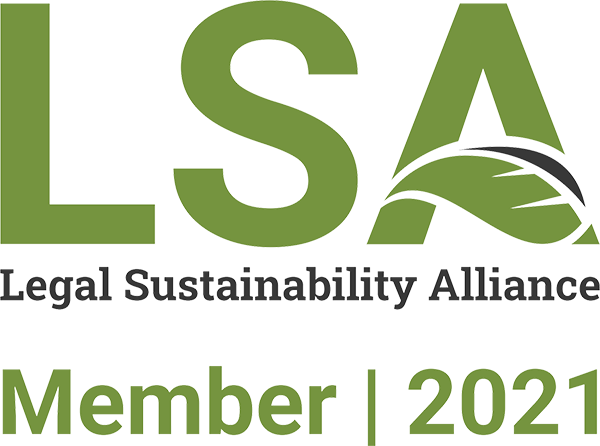The turbulent road of the renewable energy support scheme is already common knowledge. Concerns regarding the high costs of the support scheme have materialised, among others, into a mechanism whereby large electricity consumers have been partially, but significantly (precisely up to 85%) exempted from the payment of green certificates. The mechanism was enacted under Government Decision no. 495 of 11 June 2014 for the creation of a state aid scheme exempting certain categories of end consumers from the application of Law no. 220/2008 on the establishment of the promotion system for renewable energy production (“GD 495”).
Long-awaited by consumers and strongly challenged by producers, the exemption mechanism entered into force on 1 December 2014 after two successive postponements. However, the mechanism does not lack enforcement difficulties. The year 2015, when the first exemption approvals have been issued, also activated controversies related to the interpretation and application of GD 495.
1. The dilemma
The controversies mainly arose between electricity suppliers that have the obligation to acquire green certificates to match the amount of electricity supplied for end consumption and their large electricity consumers that obtained a green certificate payment exemption. Throughout this time, authorities either declined the responsibility of interpreting the law or expressed rather informal and hesitant opinions.
The controversies concerned the date as of which exemption approvals become effective. Thus, GD 495 stipulated (i) that generally, the exemption applies as of the year the exemption approval was obtained, and (ii) that, as an exception, for the year 2014, the exemption is applicable as of 1 December 2014.
Given this wording, GD 495 received different interpretations on the time when the exemption approvals obtained during the year 2015 become effective. One interpretation, generally adopted by suppliers, claims that the exemption is effective as of the exemption approval’s issuance date, while another interpretation, generally embraced by consumers, argues that the exemption is effective as of 1 January of the year when the exemption agreement was issued (thus claiming the exemption generates retroactive effects).
2. A partial solution
Relative to the large number of contrary interpretations emerged on the market, relative to the lack of an official reaction from the Ministry of Economy, as promoter of the exemption mechanism, and relative to the interest shown by the regulatory authority in an interpretation that reconciles, to the extent possible, various imbalances in the application of the support scheme, the solution found was to amend GD 495 so as for it to expressly provide that the exemption is effective as of the exemption approval’s issuance date (and not as of the as of the year the exemption approval was obtained).
Thus, through Government Decision 113 of 24 February 2016 for the amendment of par. (1) of art. 3 of Government Decision no. 495/2014 for the establishment of a state aid scheme in relation to the exemption of certain categories of end consumers from the application of Law no. 220/2008 on the establishment of the promotion system for renewable energy production (“GD 113”), GD 495 was amended to provide the exemption’s effectiveness as of the exemption approval’s issuance date (save for the year 2014, in relation to which the provision stating the exemption’s effectiveness as of 1 December 2014 was maintained).
Nevertheless, the situation of the exemption approvals issued during 2015 remains unsettled and their effectiveness can still be subject to debate. Extending the applicability of GD 113 to the exemption approvals issued before its coming into force would mean to acknowledge its retroactive effect, thus violating one of the fundamental constitutional principles. Therefore, such less fortunate wording of the lawmaker is yet to find a complete solution.
3. Arguments keeping the debate open
Under these circumstances, suppliers and their consumers continue to exchange arguments in support of their most favourable interpretation of the non-amended GD 495 applicable as at the issuance of 2015 exemption approvals. While suppliers would like to have clarity over the matter in order to be able to determine the size of the green certificates portfolio that they have to prove to have acquired in meeting the relevant obligation for 2015, consumers are considering the large amounts of money representing the green certificates for the first six or nine months of 2015 (the 2015 exemption approvals being mainly issued in two waves, in June and in September 2015, respectively).
Both sides have pertinent arguments.
Such arguments mainly derive from the administrative nature of the exemption approval; thus, if the rule states that administrative deeds are effective as of their issuance/communication date, it is not the rule that needs to be reiterated in the law, but it is the exemption that needs to be expressly provided therein. Thus, based on this accepted truth, GD 495 seems to expressly offer a retroactive effect, as of 1 January, to approvals obtained in 2015. At the same time, despite being express, the wording is not also clear, thus making it necessary to have additional arguments.
Such an additional argument results from the annual (and not quarterly) nature of the green certificate acquisition obligation incumbent upon suppliers providing electricity to consumers that in 2015 were about to obtain the exemption approval. The rationale behind imposing, by means of an exception, the annual nature of the acquisition obligation seems to be precisely the support provided to those suppliers, by not forcing them to prove that they have met the green certificate acquisition obligation quarterly, when the very existence of this obligation is uncertain given the possible exemption of their large consumers. Such interpretation can also be partially supported with arguments from the Methodology for the establishment of mandatory annual quotas of electricity produced from renewable energy sources benefiting from the green certificates promotion system and of green certificates acquisition quotas, approved under ANRE Order no. 101/2015.
Other arguments may result, among others, from analysing the exemption mechanism’s eligibility conditions.
The controversy concerning the effects of exemption approvals is rich in legal reasoning and therefore is not easily reconcilable. It remains topical despite settlement efforts made by issuing GD 113 whose effects may not be extended over the period before its coming into force. It is equally possible that GD 113 represented a rather strategic solution, but, relative to the substantive issue that we have outlined above, GD 113 cannot be de plano regarded as representing the legal willingness of the lawmaker that issued GD 495. Therefore, GD 495, as applicable for the year 2015, must be analysed independently from the amendment made under GD 113. To the same extent, GD 495 must be interpreted by reference to the grounds of the exemption mechanism (including the argumentation and determinations considered in approving the exemption mechanism as state aid scheme by the European Commission) and to the applicable legislative framework of the green certificates acquisition obligation.
This information is not legal assistance. For further details, please contact us.





